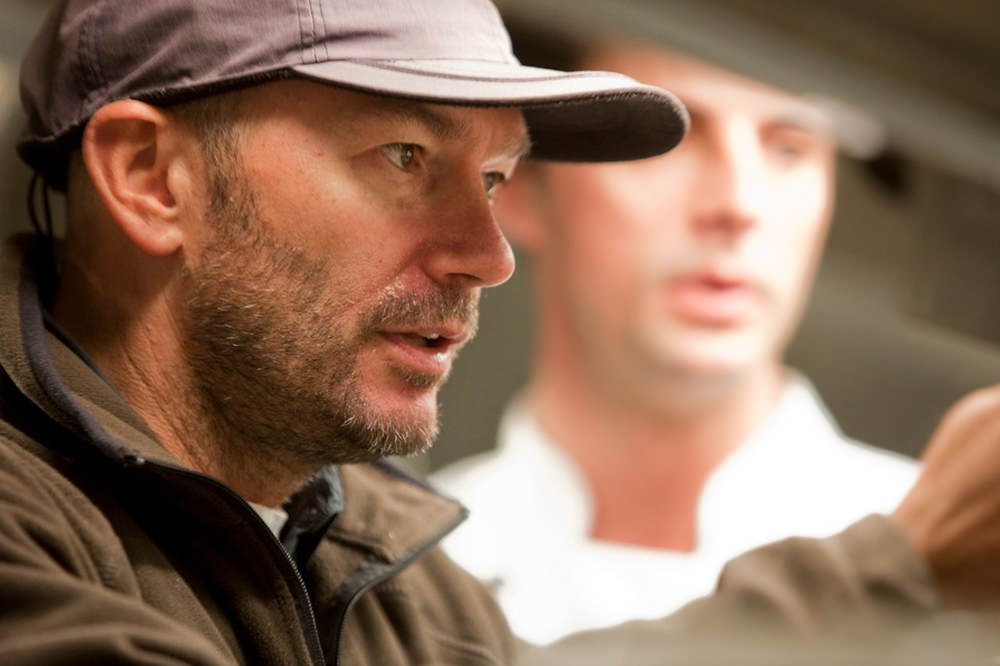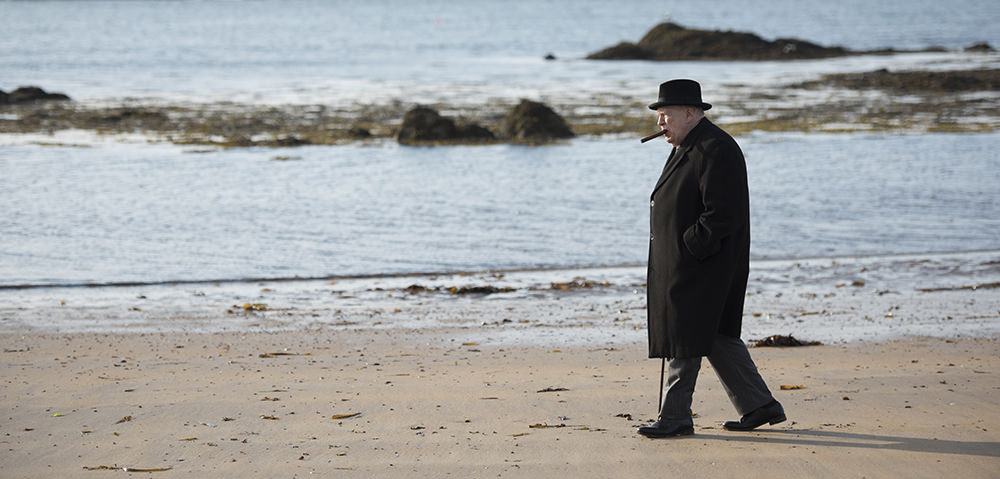Jonathan Teplitzky: a director's vision
How director Jonathan Teplitzky’s love of photography led him into cinema and creating the likes of Churchill, The Railway Man and Gettin’ Square.
 Jonathan Teplitzky
Jonathan Teplitzky
Australian director Jonathan Teplitzky is all about looking past what you can see at street level.
There’s a scene in his latest film Churchill where Winston Churchill (played by Brian Cox) pulls up in a 1940s car, steps out in his signature attire and holds a quiet meeting with General Eisenhower (John Slattery) at the top of a hill. Watching it, you would never know that if the camera lifted just half a metre, it would reveal the entirety of modern-day Edinburgh sprawled out beneath them.
“We didn’t spend one cent of art department money, other than the car."
"We didn’t have to do anything to the location and it was period, by using just the horizon line,” Teplitzky says.
“It’s a very low budget film and we had to find creative ways to solve problems and one of them was to set half of it, as we do, outside, because you then don’t have to turn it into period.”
Usually, Teplitzky would be involved in the features he directs right from the development stage. But he was only approached by friend and producer Nick Taussig mere months before the shoot for Churchill, which follows the iconic Brit in the 96 hours before D-Day.
“He rang me in the middle of the day and said, ‘we’ve just lost our director, is there any chance you could come and do this? You have to decide in two days’,” he says.
“And I just took the plunge [and] probably seven or eight weeks after saying yes we were shooting it.”
Whether he has two months of prep or much longer, Teplitzky says locations play a huge part in how the film pieces together in his mind.
“That’s why I like location hunting early, because they help me understand what the story is about,” he says.
For example, in Churchill, he came across the huge ornate windows of the Glasgow City Chambers and “when I saw that room in that place, it says isolation, it says I’m alone, it says all those things.”
It helped him realise that the film was about a man who at the beginning of World War II was at the centre of it all, leading his country through the Blitz. But over the course of the next five years, after America began to lead the charge, “he’d become more and more isolated.”
“Metaphorically it was about getting old and how your influence, power and control over things wanes, and it’s about regenerating yourself,” he says.
“[Then you] really want a dozen images in the film which talk to the audience about that without a piece of dialogue saying ‘I’m feeling very isolated’.”
 Brian Cox in Churchill / Transmission
Brian Cox in Churchill / Transmission
When we speak, in May 2017, Teplitzky has been location scouting for his next feature Mr Cranky, which is set to shoot later this year on the Gold Coast, with Screen Australia and Screen Queensland support.
He’s in the midst of that process – of creating a catalogue of images that represent what he’s trying to say for the film, about an underworld debt collector who’s charged with looking after a precocious seven-year-old orphan while embroiled in a gangland war.
“I come from a photographic background."
"That was my first love – just taking photographs."
"So I brought that into my filmmaking and that’s what I look for really quickly. I’m on the Gold Coast now and I’m always looking for ways in which to ‘abstract up’.”
What does he mean by ‘abstract up’? Well, for example, he says people came up to him after seeing his 2003 film Gettin’ Square and said it looked like a series of Jeffrey Smart paintings. It wasn’t intentional, but Teplitzky could see what they meant.
“It’s true to a certain degree – that almost stylised way of trying to take a landscape and finding the angles that in a sense get rid of the naturalism,” he says.
In the Gold Coast, like with Edinburgh, it’s about changing the perspective: ignoring the street furniture, ignoring the new lamp posts with their promotional flags, and ignoring all the practical things.
“Get the camera low, and look up,” he says.
“[Then] you’ve got palm trees and you’ve got buildings and you’ve got an amazing palette going on up there.”
Mr Cranky is a reunion in many ways.
It will reunite Teplitzky with The Railway Man producer Chris Brown as well as Gettin’ Square screenwriter Chris Nyst, who has been chipping away at the story in between his day-to-day work as a criminal justice lawyer.
It will see Teplitzky return to film in Australia (and specifically Queensland) for the first time since 2013’s The Railway Man.
And it will allow Teplitzky to dive back into the Gettin’ Square world of crime comedies, after three years living and working in London on dramas such as Broadchurch (which his partner, acclaimed director Jessica Hobbs also directed episodes of), Channel 4’s Indian Summers, TNT’s Will and the crime noir Marcella.
“[But] because I’ve done a crime comedy on the Gold Coast before, our big challenge is to try to elevate it to the next level somehow. So it doesn’t just feel like a rehash of what we did before,” he says.
“Comedy [is] a challenge because it’s so black and white. It’s either funny or it’s not. Whereas with a drama, it’s a much murkier and ambiguous world, [and] you possibly delve into the emotional layers of characters more.
“Comedy should be the same, but you’re spending most of your time trying to make the audience laugh.”
Churchill releases in Australian cinemas on 8 June. It is being distributed by Transmission Films.
The Railway Man is available on Dendy Direct, Google Play and iTunes.
Gettin’ Square is available on DVD.
Find Jonathan Teplizky’s other Australian work, including films Better Than Sex and Burning Man, on The Screen Guide.

What to read next
Producer Melissa Kelly walks us through the film festival release strategy for thriller Hounds of Love and the Western Australian talent that helped make the film a reality.
30 May 2017
Caris Bizzaca